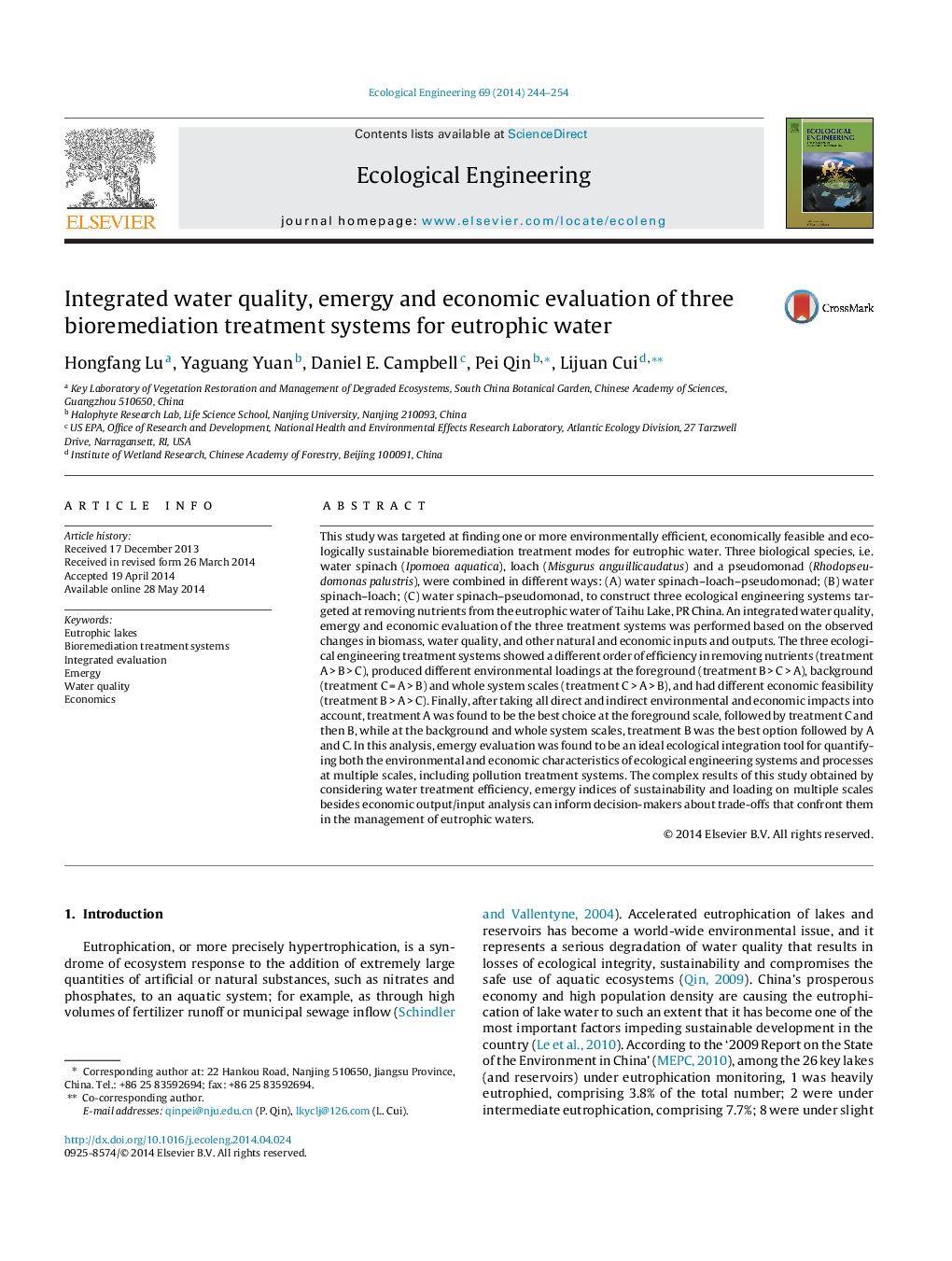| Article ID | Journal | Published Year | Pages | File Type |
|---|---|---|---|---|
| 4389399 | Ecological Engineering | 2014 | 11 Pages |
•Three configurations of bioremediation treatment systems for eutrophic water were tested.•Integrated water quality, economic and emergy evaluations were performed.•Disparate results from the environmental and economic analyses were integrated.•Environmental impacts, economic benefit and sustainability are spatial concepts.
This study was targeted at finding one or more environmentally efficient, economically feasible and ecologically sustainable bioremediation treatment modes for eutrophic water. Three biological species, i.e. water spinach (Ipomoea aquatica), loach (Misgurus anguillicaudatus) and a pseudomonad (Rhodopseudomonas palustris), were combined in different ways: (A) water spinach–loach–pseudomonad; (B) water spinach–loach; (C) water spinach–pseudomonad, to construct three ecological engineering systems targeted at removing nutrients from the eutrophic water of Taihu Lake, PR China. An integrated water quality, emergy and economic evaluation of the three treatment systems was performed based on the observed changes in biomass, water quality, and other natural and economic inputs and outputs. The three ecological engineering treatment systems showed a different order of efficiency in removing nutrients (treatment A > B > C), produced different environmental loadings at the foreground (treatment B > C > A), background (treatment C = A > B) and whole system scales (treatment C > A > B), and had different economic feasibility (treatment B > A > C). Finally, after taking all direct and indirect environmental and economic impacts into account, treatment A was found to be the best choice at the foreground scale, followed by treatment C and then B, while at the background and whole system scales, treatment B was the best option followed by A and C. In this analysis, emergy evaluation was found to be an ideal ecological integration tool for quantifying both the environmental and economic characteristics of ecological engineering systems and processes at multiple scales, including pollution treatment systems. The complex results of this study obtained by considering water treatment efficiency, emergy indices of sustainability and loading on multiple scales besides economic output/input analysis can inform decision-makers about trade-offs that confront them in the management of eutrophic waters.
